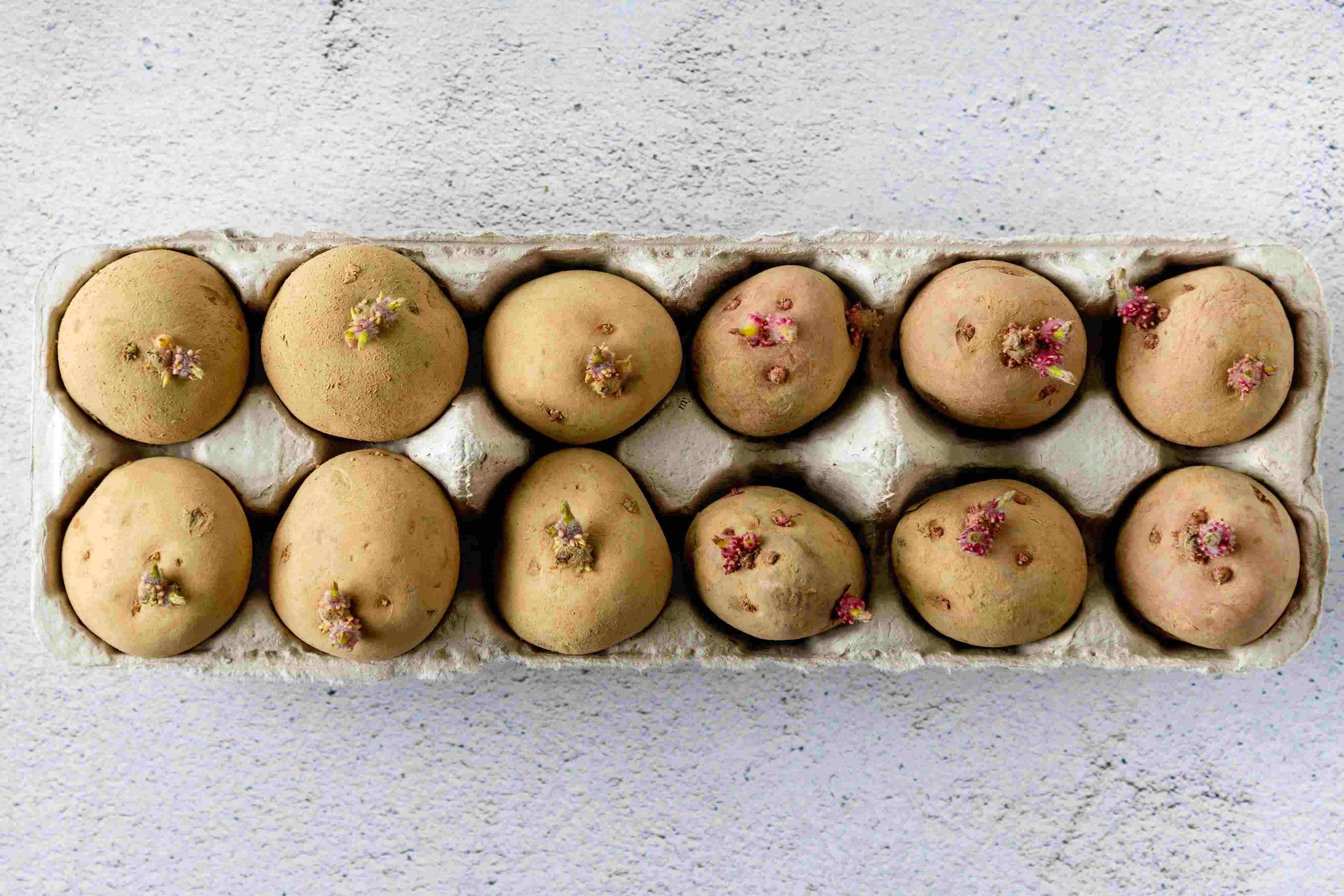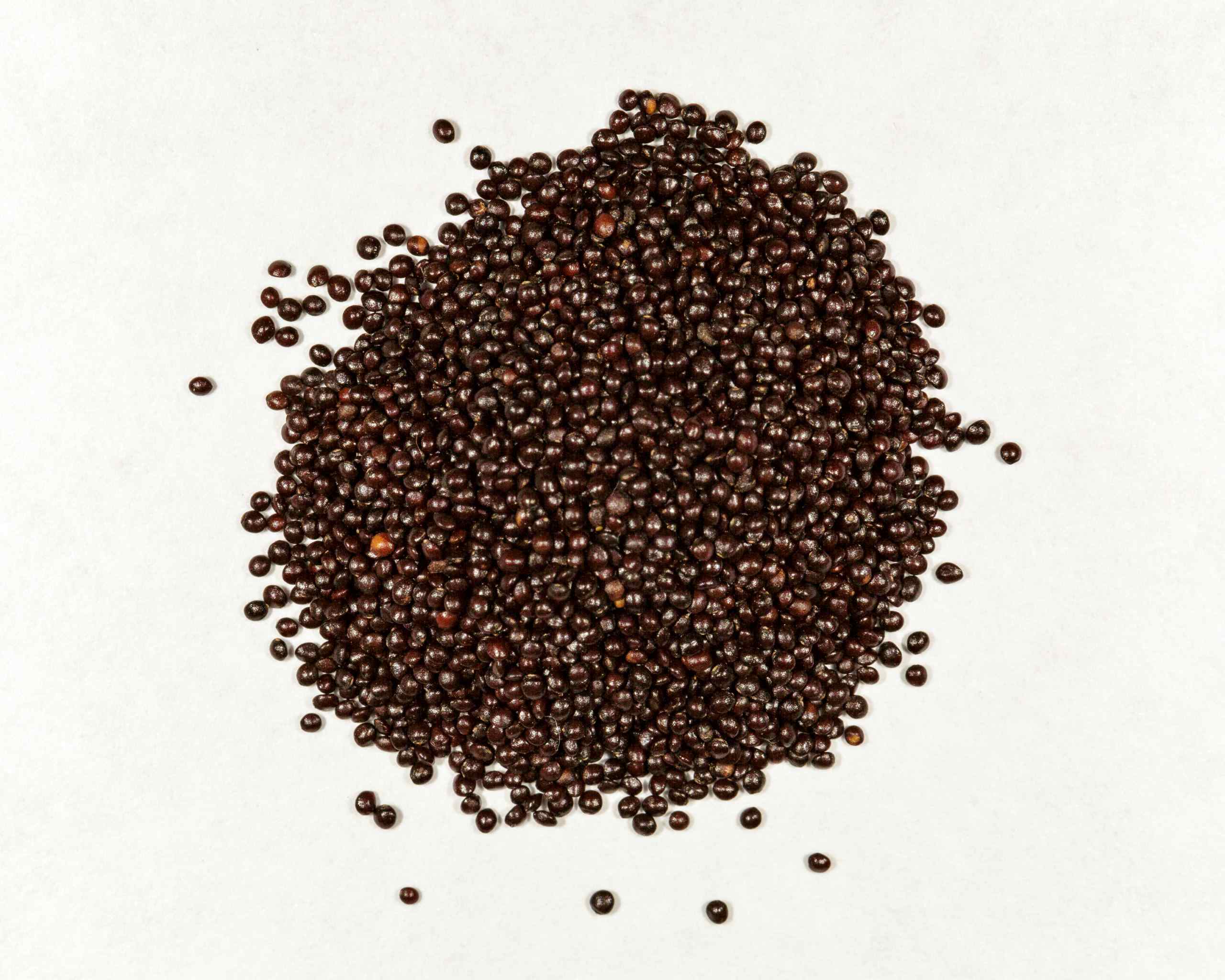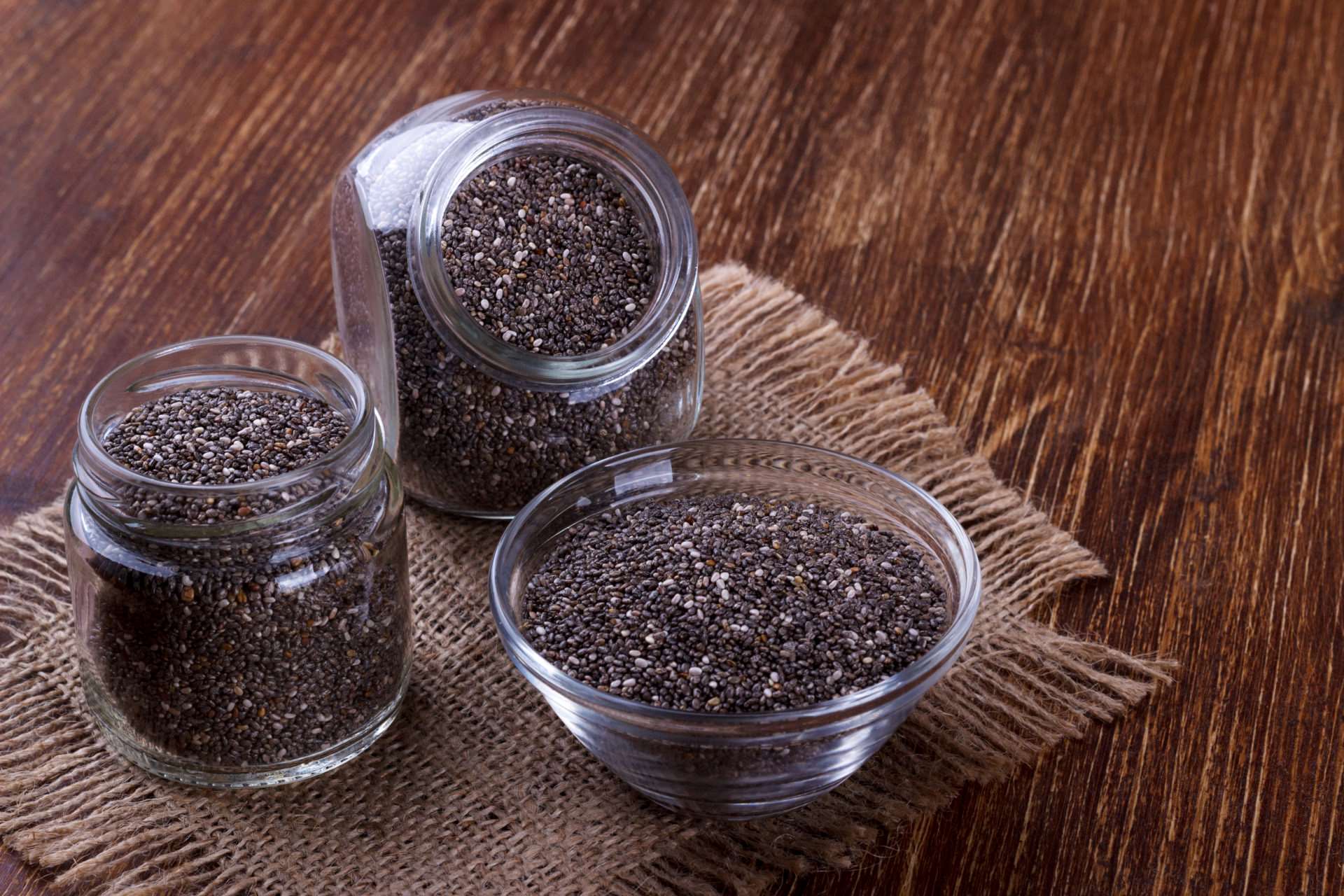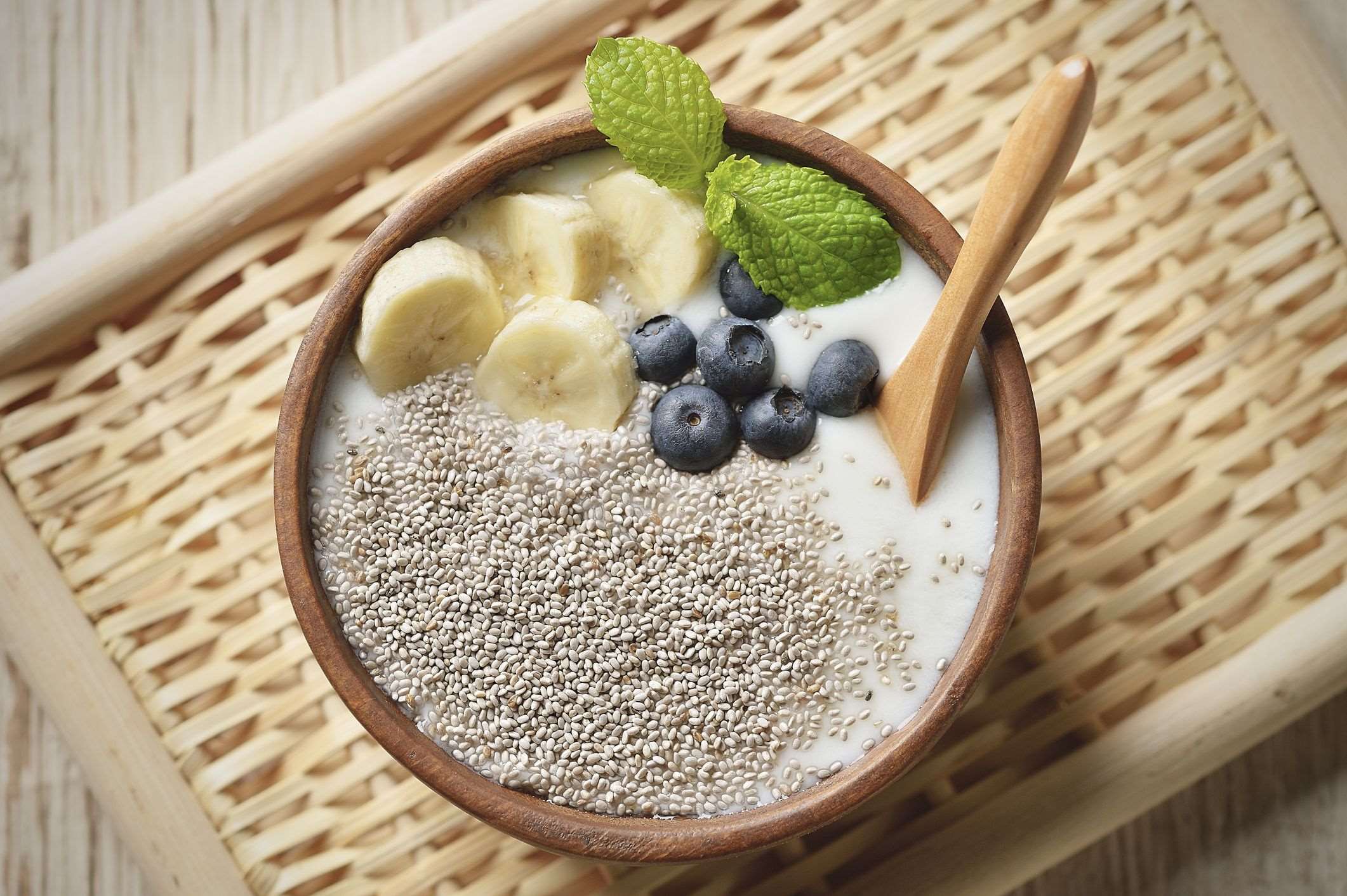Home>Types of Gardening>Edible Gardening>What Do Chia Seeds Taste Like


Edible Gardening
What Do Chia Seeds Taste Like
Modified: January 22, 2024
Discover the taste of chia seeds in edible gardening. Learn how to incorporate these nutritious seeds into your diet and experience their unique flavor.
(Many of the links in this article redirect to a specific reviewed product. Your purchase of these products through affiliate links helps to generate commission for Chicagolandgardening.com, at no extra cost. Learn more)
Table of Contents
Introduction
Welcome to the world of edible gardening! There’s nothing quite as satisfying as growing your own food and reaping the rewards of your hard work. And when it comes to edible gardening, one plant that has gained significant popularity is chia seeds. Chia seeds are not only packed with nutrition but also have a unique taste and texture that can elevate your culinary creations.
Derived from the plant Salvia hispanica, chia seeds have been a staple in the diets of ancient civilizations like the Aztecs and Mayans. These tiny black or white seeds are often referred to as a superfood due to their impressive nutrient content.
Chia seeds are an excellent source of omega-3 fatty acids and boast a high fiber content, making them a great addition to a healthy diet. They are also rich in minerals such as calcium, magnesium, and phosphorus, which are essential for maintaining optimal health.
Aside from their nutritional value, chia seeds offer a unique textural element to recipes. When soaked in liquid, they develop a gel-like consistency, which adds a pleasant chewiness to dishes. This texture can enhance various culinary creations and provide a satisfying mouthfeel.
But what about the taste of chia seeds? Are they bland or do they have a distinct flavor? Let’s explore the flavor profile of chia seeds in the next section to understand how they can contribute to your edible gardening journey.
Nutritional Profile of Chia Seeds
Chia seeds are a nutritional powerhouse, packed with essential nutrients that can support your overall health and well-being. These small seeds are an excellent source of fiber, protein, healthy fats, vitamins, and minerals.
One of the standout features of chia seeds is their high omega-3 fatty acid content. Omega-3s are crucial for brain health, heart health, and reducing inflammation in the body. In fact, chia seeds contain more omega-3s than other plant-based sources, such as flaxseeds.
Fiber is another nutrient that chia seeds excel in. Just one ounce (28 grams) of chia seeds provides an impressive 10 grams of fiber, which is nearly one-third of the recommended daily intake for adults. Fiber is essential for digestive health, promoting regular bowel movements, and reducing the risk of chronic diseases like heart disease and diabetes.
Chia seeds also contain a notable amount of protein, making them a suitable addition to a plant-based diet. Protein is essential for building and repairing tissues, supporting muscle health, and maintaining a strong immune system.
When it comes to vitamins and minerals, chia seeds offer a range of essential nutrients. They are particularly rich in calcium, providing more calcium per ounce than most dairy products. Calcium is crucial for maintaining strong bones and teeth, as well as supporting proper nerve and muscle function.
Additionally, chia seeds are a good source of magnesium, phosphorus, and manganese, which play key roles in energy production, bone health, and antioxidant defense in the body.
With their nutritional profile, chia seeds can be a valuable addition to any diet, especially for those looking to boost their intake of omega-3s, fiber, and essential nutrients. Incorporating these seeds into your edible gardening journey can help you meet your nutritional needs and promote a healthy lifestyle.
Texture of Chia Seeds
One of the unique characteristics of chia seeds is their texture, which adds an interesting element to various dishes and recipes. When chia seeds come into contact with liquid, they have the ability to absorb a significant amount of it, forming a gel-like consistency.
When soaked in liquid, chia seeds develop a gelatinous outer layer while maintaining a slightly crunchy center. This texture can vary depending on the amount of liquid used and the duration of soaking. Some people enjoy the softer, gel-like texture, while others prefer a crunchier experience.
This gelatinous property of chia seeds makes them a versatile ingredient in both sweet and savory recipes. In desserts, they can be used to create puddings, mousses, or even as a substitute for eggs in baking. The gel-like texture of chia seeds helps bind ingredients together and provides a smooth and creamy consistency to dishes.
Besides desserts, chia seeds can also be used to add texture to beverages. Many people enjoy making chia seed drinks by simply stirring them into water, juice, or plant-based milk. As the chia seeds absorb the liquid, they create a unique drink with a texture similar to tapioca pearls.
Moreover, the texture of chia seeds can be an enjoyable addition to breakfast dishes such as oatmeal, yogurt, or smoothie bowls. When sprinkled on top, they provide a subtle crunch and an interesting contrast to the creamy base.
In savory recipes, chia seeds can be used as a coating for meats or as a thickening agent in sauces and dressings. The gel-like texture created by the seeds helps to bind the coating, giving a crispy texture when cooked. When used as a thickener, chia seeds add body and viscosity to sauces without altering the flavor significantly.
Overall, the unique texture of chia seeds allows them to be a versatile and enjoyable ingredient in a variety of dishes. Whether you’re looking to add a crunchy element or create a silky smooth texture, chia seeds can be a valuable addition to your edible gardening journey.
Flavor Profile of Chia Seeds
When it comes to the flavor profile of chia seeds, they are relatively mild and don’t have an overpowering taste. This makes them versatile and allows them to be incorporated into a wide range of recipes without significantly altering the overall flavor.
Raw chia seeds have a slightly nutty and earthy flavor, which adds a subtle depth to dishes. Some describe the taste as similar to poppy seeds or sesame seeds. However, the flavor becomes more subdued when combined with other ingredients or when cooked.
Unlike other seeds, chia seeds do not possess a strong bitter or acidic taste, making them more palatable for those who are sensitive to certain flavors. This neutral flavor profile makes chia seeds a suitable addition to both sweet and savory recipes.
When chia seeds are soaked in liquid, they absorb some of the flavors from the surrounding ingredients, further enhancing the overall taste of the dish. This is particularly evident when chia seeds are used in recipes such as puddings, smoothies, or overnight oats. As the seeds absorb the flavors, they become infused with the sweetness of fruits, the creaminess of milk, or the richness of spices.
In savory recipes, the mild flavor of chia seeds allows them to blend seamlessly with other ingredients. They can be added to soups, stews, or casseroles to thicken the liquid, without significantly altering the taste. The chia seeds become part of the overall flavor profile of the dish, enhancing its texture and nutritional value.
Given their neutral taste, chia seeds provide an opportunity to experiment with different seasonings and flavor combinations. Whether you prefer sweet or savory dishes, chia seeds can be a versatile ingredient that complements a wide range of flavors.
As you explore the world of edible gardening and incorporate chia seeds into your recipes, you’ll discover how their subtle flavor profile can enhance the overall taste and texture of your culinary creations.
Culinary Uses of Chia Seeds
Chia seeds have gained popularity not only for their nutritional value but also for their versatility in the culinary world. These tiny seeds can be used in a variety of ways to add a nutritional boost and unique texture to your dishes.
One of the most popular culinary uses of chia seeds is in making chia seed pudding. By mixing chia seeds with your choice of liquid, such as milk or yogurt, and adding sweeteners and flavorings, you can create a delicious and nutritious dessert or breakfast option. The chia seeds absorb the liquid, forming a creamy and gelatinous texture that resembles pudding.
Another way to incorporate chia seeds into your diet is by adding them to smoothies or shakes. Simply sprinkle a tablespoon or two of chia seeds into your blender along with your favorite fruits, vegetables, and liquids. As the chia seeds blend, they add a thickening effect and create a smooth and velvety consistency.
Chia seeds can also be used in baking as a substitute for eggs or as an ingredient to add texture and nutrients to your baked goods. To replace an egg, combine one tablespoon of chia seeds with three tablespoons of water and allow it to sit for a few minutes until it thickens. The resulting gel-like mixture can be used as an egg replacement in recipes like cakes, cookies, or muffins.
In addition to sweet dishes, chia seeds can be incorporated into savory recipes as well. They can be sprinkled on top of salads, roasted vegetables, or grain bowls for a crunchy texture. Chia seeds can also be used as a coating for meats or fish, providing a healthy alternative to breadcrumbs or flour.
For those who enjoy homemade jams and preserves, chia seeds can be used as a natural thickener. When combined with mashed fruits and a sweetener of your choice, the chia seeds absorb the excess liquid, creating a jam-like consistency without the need for pectin or excessive cooking.
Lastly, chia seeds can be used to create refreshing and hydrating drinks. By infusing water with chia seeds, along with your choice of fruits, herbs, or flavorings, you can make a delicious and nutritious beverage. As the chia seeds sit in the liquid, they develop a unique texture similar to tapioca pearls, adding an enjoyable element to your drinks.
With their versatility and nutritional value, chia seeds offer endless possibilities in the kitchen. Whether you’re looking to boost the nutritional content of your meals, experiment with different textures, or add a unique twist to your favorite recipes, chia seeds can be a valuable ingredient in your edible gardening journey.
Pairing Chia Seeds with Other Ingredients
Chia seeds can be a versatile ingredient that pairs well with various other ingredients, enhancing the flavors and textures of your culinary creations. Whether you’re preparing sweet or savory dishes, here are some excellent pairings to consider when using chia seeds in your recipes:
- Fruits: Chia seeds work harmoniously with a wide range of fruits. They can be added to smoothies, fruit salads, or yogurt bowls, complementing the natural sweetness and adding a delightful crunch. Try pairing chia seeds with berries, tropical fruits like mango and pineapple, or citrus for a refreshing combination.
- Nuts and Seeds: Combine chia seeds with other nuts and seeds to create a wholesome and nutritious blend. Mix them with almonds, walnuts, pumpkin seeds, or flaxseeds to add a variety of textures and flavors to your granolas, energy bars, or trail mixes.
- Spices: Spice up your chia seed creations by adding a touch of warmth and aroma. Cinnamon, nutmeg, ginger, and cardamom are excellent spices that pair well with chia seeds in recipes like chia seed puddings, baked goods, or spiced beverages.
- Yogurt and Dairy Alternatives: Chia seeds can add a delightful crunch and creamy texture to yogurt and dairy-free alternatives like coconut or almond yogurt. Mix in chia seeds with your favorite yogurt and top it off with fresh fruit or granola for a satisfying and nutritious breakfast or snack.
- Chocolate and Cacao: If you’re a chocolate lover, chia seeds can be a fantastic addition to your chocolatey creations. Whether it’s adding chia seeds to your homemade chocolate desserts, mixing them into a chocolate smoothie, or sprinkling them on top of a chocolate mousse, the combination creates a delightful treat.
- Honey, Maple Syrup, and Agave: Chia seeds can absorb and enhance the natural sweetness of honey, maple syrup, or agave nectar. When combined, they create a balanced flavor and help bind the ingredients together in recipes like energy bars, granola, or homemade healthy treats.
These are just a few examples of how chia seeds can be paired with other ingredients. Don’t be afraid to get creative and experiment with different combinations to find your own unique flavor profiles. With their mild taste and versatile texture, chia seeds can seamlessly blend with a wide array of ingredients, adding nutritional value and culinary flair to your edible gardening journey.
Incorporating Chia Seeds into Your Diet
If you’re looking to boost the nutritional content of your diet, chia seeds can be a valuable addition. Here are some practical ways to incorporate chia seeds into your meals and snacks:
- Chia Seed Pudding: Whip up a delicious chia seed pudding by combining chia seeds with your choice of milk (dairy or plant-based) and sweetening it with honey or maple syrup. Let it sit in the refrigerator overnight, and in the morning, you’ll have a creamy and nutritious pudding ready to enjoy. Top it with fresh fruits, nuts, or granola for added flavor and texture.
- Smoothies and Shakes: Add a tablespoon or two of chia seeds to your favorite smoothie or shake recipe. The chia seeds will thicken the drink and provide an extra boost of fiber and omega-3 fatty acids.
- Baking: Replace eggs in your baked goods by combining one tablespoon of chia seeds with three tablespoons of water. Let the mixture sit for a few minutes until it forms a gel-like consistency, then use it as an egg substitute in muffins, cookies, or pancakes.
- Salads and Yogurt Bowls: Sprinkle a tablespoon of chia seeds on top of your salads or yogurt bowls to add some crunch and boost the nutritional content. Chia seeds can also be mixed into dressings or yogurt for added texture.
- Jams and Preserves: Create homemade jams and preserves by mixing mashed fruits, chia seeds, and a natural sweetener of your choice. The chia seeds will help thicken the mixture without the need for pectin or excessive cooking.
- Breading and Coatings: Use ground chia seeds as a healthier alternative to breadcrumbs when coating meats or fish. The chia seeds will provide a crispy and flavorful exterior while adding a dose of omega-3 fatty acids.
- Hydrating Drinks: Infuse water with chia seeds and your choice of fruits, herbs, or flavorings to create a refreshing and hydrating drink. The chia seeds will add a unique texture to the beverage, making it a delightful and nutritious option.
Remember to start with small amounts of chia seeds and gradually increase your intake to allow your body to adjust to the additional fiber. It’s also important to drink plenty of water when consuming chia seeds to help with digestion and prevent any discomfort.
By incorporating chia seeds into your daily meals and snacks, you can easily reap the nutritional benefits they offer. Get creative with your recipes and enjoy the added texture, taste, and health benefits that chia seeds bring to your edible gardening journey.
Conclusion
Incorporating chia seeds into your edible gardening journey can be a game-changer. These tiny seeds are not only packed with essential nutrients but also bring a unique texture and mild flavor to your culinary creations.
From their impressive nutritional profile, including omega-3 fatty acids, fiber, and a range of vitamins and minerals, to their gelatinous texture when soaked in liquid, chia seeds offer a myriad of benefits. They can be used to create delicious chia seed puddings, added to smoothies for extra thickness and nutrition, used as an egg substitute in baking, or sprinkled on top of salads or yogurt bowls for added crunch.
Chia seeds can easily be paired with other ingredients, allowing you to experiment with different flavors and textures. Whether you choose to combine chia seeds with fruits, nuts, spices, or dairy alternatives, the possibilities are endless.
By incorporating chia seeds into your daily meals and snacks, you can boost your nutritional intake, increase your fiber consumption, and enjoy the unique texture they bring to your recipes. As you embark on your edible gardening journey, remember to start with small amounts of chia seeds and gradually increase your intake to allow your body to adjust.
So, why not harness the power of chia seeds and elevate your culinary creations? Whether you’re following a plant-based diet, looking for healthy alternatives in your cooking, or simply wanting to explore new flavors and textures, chia seeds can be a valuable addition to your pantry. Embrace the versatility and nutritional benefits of chia seeds and let your edible garden flourish with these tiny, nutrient-rich powerhouses!









